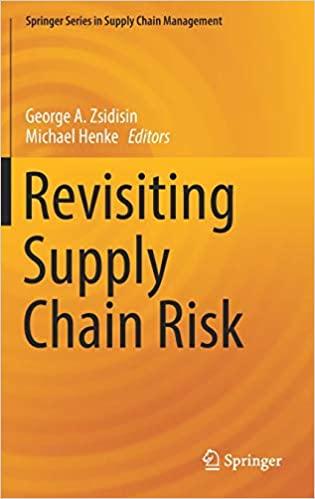Question
The Silver Star Bicycle Company will manufacture both men's and women's models for its Easy-Pedal bicycles during the next two months. Management wants to develop
The Silver Star Bicycle Company will manufacture both men's and women's models for its Easy-Pedal bicycles during the next two months. Management wants to develop a production schedule indicating how many bicycles of each model should be produced in each month. Current demand forecasts call for 150 men's and 125 women's models to be shipped during the first month and 200 men's and 150 women's models to be shipped during the second month. Additional data are shown:
| Labor Requirements (hours) | ||||||
| Production Model | Costs | Manufacturing | Assembly | Current Inventory | ||
| Men's | $120 | 2.0 | 1.5 | 20 | ||
| Women's | $90 | 1.6 | 1.0 | 30 | ||
Last month, the company used a total of 1,000 hours of labor. The company's labor relations policy will not allow the combined total hours of labor (manufacturing plus assembly) to increase or decrease by more than 100 hours from month to month. In addition, the company charges monthly inventory at the rate of 2% of the production cost based on the inventory levels at the end of the month. The company would like to have at least 27 units of each model in inventory at the end of the two months. (Hint: Define variables for production and inventory held in each period for each product. Then use a constraint to define the relationship between these: inventory from end of previous period + produced this period - demand this period = inventory at end of this period.)
| (a) | Establish a production schedule that minimizes production and inventory costs and satisfies the labor-smoothing, demand, and inventory requirements. What inventories will be maintained and what are the monthly labor requirements? | ||||||||||||
| If required, round your answers to nearest whole number. If your answer is zero, enter 0. | |||||||||||||
| Production schedule: The optimal solution is as follows | |||||||||||||
| |||||||||||||
| Total Cost = $ | |||||||||||||
| |||||||||||||
| If required, round your answer to two decimal places. | |||||||||||||
| |||||||||||||
| (b) | If the company changed the constraints so that monthly labor increases and decreases could not exceed 50 hours, what would happen to the production schedule? If required, round your answers to nearest whole number. | ||||||||||||
| Production schedule: The revised optimal solution is as follows | |||||||||||||
| |||||||||||||
| Total Cost = $ | |||||||||||||
| How much will the cost increase? | |||||||||||||
| $ | |||||||||||||
| What would you recommend? | |||||||||||||
| The input in the box below will not be graded, but may be reviewed and considered by your instructor. | |||||||||||||
|
| |||||||||||||
Step by Step Solution
There are 3 Steps involved in it
Step: 1

Get Instant Access to Expert-Tailored Solutions
See step-by-step solutions with expert insights and AI powered tools for academic success
Step: 2

Step: 3

Ace Your Homework with AI
Get the answers you need in no time with our AI-driven, step-by-step assistance
Get Started


